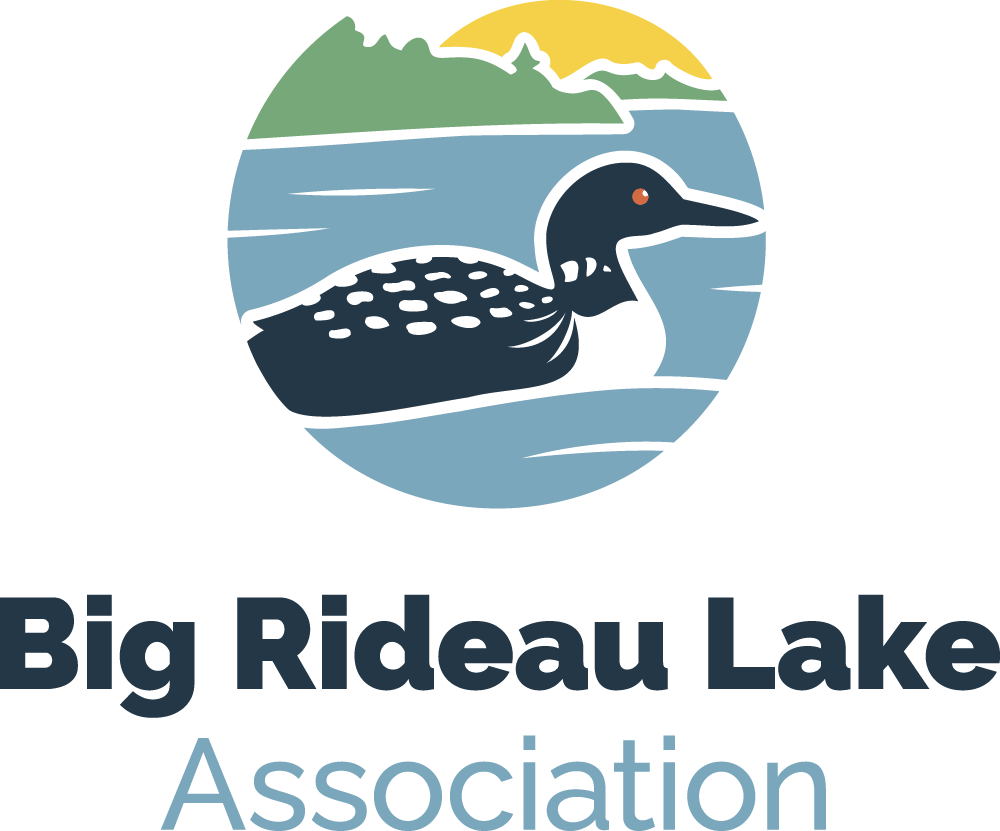Techno-Science: Tracking Fish with Electronic Tags in Big Rideau Lake
Prepared by Alice Abrams, M.Sc. Candidate, Fish Ecology and Conservation Physiology Lab, Department of Biology | Carleton University
Knowing where fish are distributed through space and time is essential to the development of effective management strategies. Big Rideau Lake is among the most heavily “fished” water bodies in all of eastern Ontario, thus a clear understanding of how fish are distributed throughout the seasons may assist in providing managers with information necessary to protect highly sought after species.
In partnership with the Big Rideau Lake Association, the Rideau Valley Conservation Authority, and the Natural Science and Engineering Research Council of Canada, Dr. Steven Cooke’s lab from Carleton University (see www.FECPL.ca) is studying the movement and habitat use of largemouth and smallmouth bass (collectively termed black bass) on Big Rideau Lake. Our research questions focus on the behaviour of fish following fishing tournaments; whether fish become “concentrated” where they are released or if/when they return to their home range in Big Rideau Lake. Understanding how this varies across seasons is also relevant given that fishing tournaments occur from the day the season opens through to just before ice-on. Additionally, spatial distribution questions arise relating to fish sanctuaries. For example, do fish that reside within the sanctuaries spend all of their time in the sanctuary or do they venture out where they may be potentially captured? Both of these issues are highly relevant to the management of black bass, and the research conducted by the Cooke lab will provide the science necessary for improving management of black bass on Big Rideau Lake.
Fish movement can be monitored by the use of fish tracking devices such as acoustic receivers and micro acoustic transmitters – the same tools the Cooke Lab is using to study bass in Big Rideau Lake. Acoustic receivers are essentially a passive listening device that records the movements of tagged fish as they pass within the reception zone of the a given receiver. So far the Cooke lab has deployed 15 acoustic receivers throughout Big Rideau Lake. Later this fall we will add 20 more receivers to the array. These ‘listening devices’ (they are actually underwater microphones – called hydrophones) obtain information about fish movement for 365 days a year (including under ice) by receiving a uniquely coded (each tag and thus each fish has its own code) signal emitted by micro acoustic tags. These acoustic tags are incredibly small (the size of a peanut) and lightweight. They operate for three years and allow researchers to study fish movement across many seasons. We can use even small transmitters (about the size of a grain of rice) to study juvenile bass but those tags only last for 1 year.
Implantation of the small acoustic tag is completed in less than five minutes! During the procedure the fish is placed on it’s back in a surgery trough and lake water is continuously pumped across the gills. The fish is temporarily sedated using low-voltage electric gloves and a very small incision is made in the abdomen. The tag is inserted and two sutures are used to close the incision. Before releasing the fish, an external identification tag is placed on the back of the fish between the soft and spiny dorsal fins (see picture below). This small blue tag is placed externally as an identification tool for anglers. The tag lists a unique four-digit code used for identification and an email address (carleton.tag@gmail.com) where anglers may inform us where/when the fish was caught and released. Following tagging, the low voltage electric gloves are turned off and the fish is ready to return to the lake.
Hundreds of black bass will be implanted with transmitters and tracked throughout Big Rideau Lake in the upcoming years. The use of acoustic receivers and transmitters allows us to better understand black bass movement through space and time, and will allow us to provide stakeholders with information necessary for improving the management of black bass in Big Rideau Lake.
Largemouth bass in surgery trough with acoustic tag in hand
Example of external identification tag showing unique 4-digit code and contact email


![FINAL BRLA HOWtheLAKEworks[FINALARTWORK]-01.png](https://images.squarespace-cdn.com/content/v1/5609ac7ae4b0659a7fa58630/1521919652710-MWROZB0YWXT5DXA553RQ/FINAL+BRLA+HOWtheLAKEworks%5BFINALARTWORK%5D-01.png)

